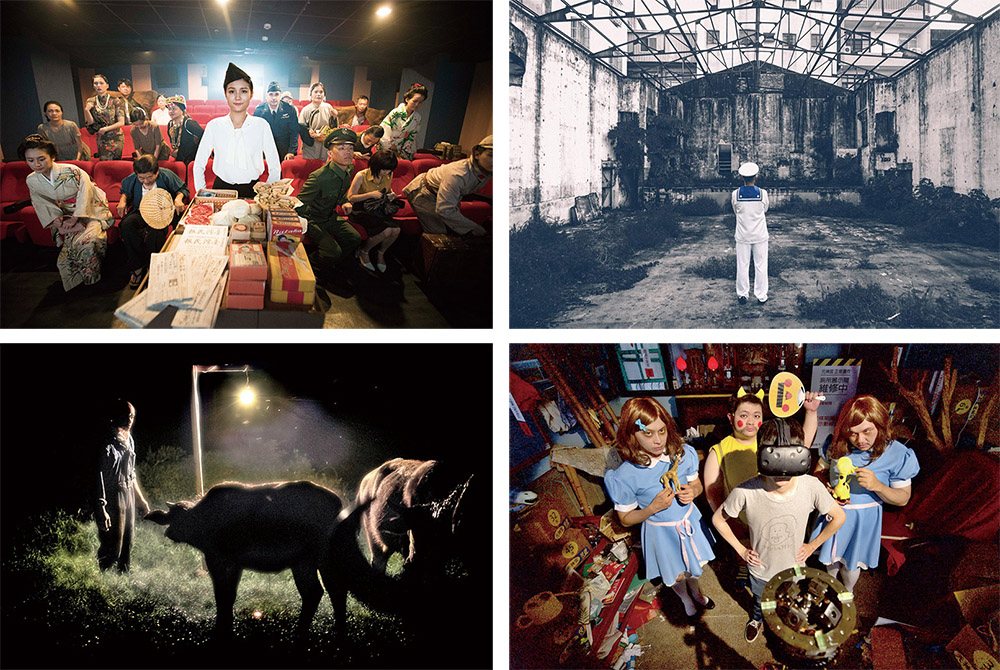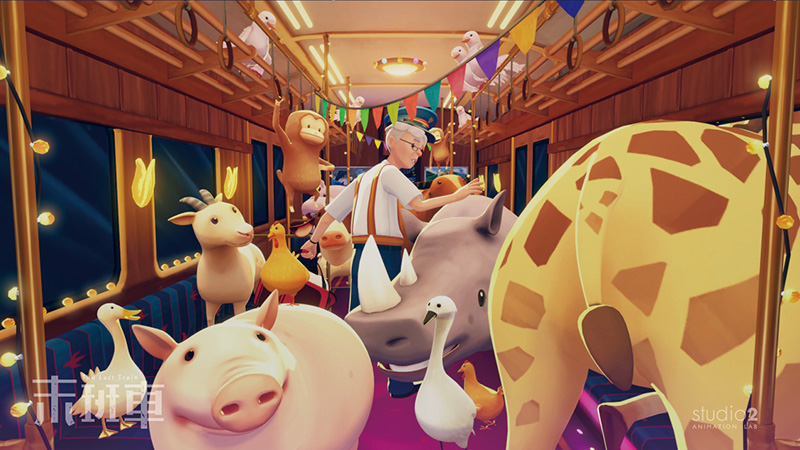Kaohsiung Film Festival Presents Five VR Films
Kaohsiung Film Festival Presents Five VR Films
◎English translation: Hou Ya-ting
◎Photos courtesy of Kaohsiung Film Archive
To promote Kaohsiung City Government's plan to initiate a motion-sensing technology software park, this year's Kaohsiung Film Festival, which ran from October 20 to November 5, presented five movies which incorporate virtual reality (VR).
● Your Spiritual Temple Sucks
Director Mr. John Hsu says he was inspired by a Japanese TV show about house remodeling when he was contemplating possible plots for Your Spiritual Temple Sucks. Mr. Hsu says that, much like a shabby house is refurbished, some people want a complete internal-and-external transformation.
Mr. Hsu presents a person who seeks psychological comfort by conducting a traditional necromancy ceremony. Mr. Hsu challenges this age-old custom by using a piece of cutting-edged photography equipment, Stereoscopic VR, creating superbly sharp three-dimensional images. As a result, a dramatic aesthetic is embedded in the film, not to mention layers of humor which arouse bursts of laughter in theaters. In addition, the 8K projector equipment delivers stunning detail, giving audiences an unequaled experience of an extra dimension.

● Looking at Zuoying through the Kinetoscope
Director Mr. Hsu Hung-yuan says this film marks his first attempt to incorporate VR effects into a film. It took him some time to get used to fluidly operating a VR camera, and the cost of professional-level VR equipment is exorbitant. However, he did not give up when faced with those daunting prices, because he wished to restore Zuoying to its former glory by utilizing such a lens.
Mr. Hsu says that, after visiting an abandoned theater in Zuoying, he felt a compulsive desire to begin work on his film. While scouting for locations on Siling Street, near Zuoying's ROC Navy base, he learned that, in its heyday, more than ten stores here sold outfits and accessories to naval personnel.
In his film, Mr. Hsu depicts the charm of old Zuoying, recreating indispensable memories through surreal scenes cherished by many local residents. The film presents streams of soldiers and customers, and the lens also addresses the photo studios where many soldiers would get portraits taken. After photographing the young men, the studios often painted into the image either a local landmark or a naval vessel, leaving a unique artifact of that era.
● Feather Dream
Malaysian director Mr. Lau Kek-huat says he contemplates what VR can contribute to a film, and wishes to present VR images beyond a confined impressionistic view of high-tech simulation. Therefore, he introduced unpredictable moments into his film, with instances of coincidence or characters' finding each other through serendipity. He elaborates that Feather Dreams carries a spectrum of emotions, and leads audiences on a journey of wonder, encountering animals, fog, clouds, and wind.
He interprets the Feathered Dream's name in Chinese script like a pictograph that shows two people cuddling up. Feathered Dream develops stories between a couple, a pregnant Vietnamese wife and her Taiwanese husband. The wife's Vietnamese background adds cultural diversity to their lives. According to Vietnamese custom, a pregnant woman will have a smarter child if she eats three goose eggs. Therefore, the couple searches for three goose eggs. Mr. Lau says this film expresses the happiness of meeting one's significant half, and the serendipity of the journey ahead of them.
● The Train Hamasen
Director Mr. Lai Kuan-yuan dedicates The Train Hamasen to his grandmother's place of birth, Hamasen. Mr. Lai weaves a plot based on historical research that includes the gathering of local tribes. While these tribes face conflict, Mr. Lai introduces his favorite utopian and science-fiction concepts to resolve those disputes. Mr. Lai wishes to deliver a utopian world through The Train Hamasen.
It took Mr. Lai a while to get used to applying VR camera techniques to film-making. He points out that, when filming so many extras acting as tribesmen and women, it was difficult to record each one's performance and movement via VR cameras. He also admits that it took him some time to gain familiarity with post-production editing procedures for VR films. VR film needs to be generated by a 360-degree piece of software, then the director needs to wear a VR headset to examine the results. Afterward, he has to edit the software. Nevertheless, Mr. Lai is very grateful that he had access to VR cameras and equipment, so he could recreate the scenes at Hamasen, and share the stories of Hamasen with his audience.

● The Last Train
Director Mr. Chiu Li-wei commuted by train when he was a student, and the scene of people rushing to catch the train has remained with him ever since, leading him to make The Last Train. Whenever he meets people at train stations, he cannot help but wonder if they will ever run into each other again. He says that, after some passengers have turned around, they will never see each other again. This film is his interpretation of his imaginings about the passengers he has encountered at various train stations.
The Last Train was the only animated film among the five VR works presented at this year's Kaohsiung Film Festival. Many scenes from The Last Train carry a childish delight and ambiance, and the film reminds some of the Japanese animated-film Galaxy Express 999.
Mr. Chiu points out that because VR films present 360-degree images, handling the material is a challenge. As a director, he wants audiences' eyes to follow the plot and enjoy a comprehensive and smooth film-watching experience.